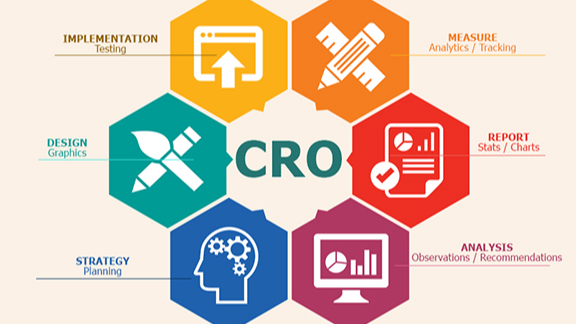The digital landscape is evolving at a rapid pace, and new technologies are constantly reshaping how businesses approach conversion rate optimization (CRO). One such technology that’s beginning to make waves is deepfake technology, traditionally associated with video manipulation, but increasingly finding useful applications in various industries, including CRO. This blog explores how a Conversion Rate Optimization Company can harness deepfake technology for positive testing and improve user engagement, conversions, and overall performance.
What is Deepfake Technology?
Deepfake technology uses artificial intelligence (AI) and machine learning algorithms to create hyper-realistic video and audio content. Originally, it gained attention for its ability to generate highly convincing synthetic media, often used for entertainment or even malicious purposes. However, the technology has evolved and is now being used for more constructive purposes, including in the realm of marketing and conversion rate optimization.
Deepfake works by analyzing an existing video or image of a person and then using AI to swap their facial expressions or voices with those of another person, creating a highly realistic, altered version. In the context of conversion rate optimization and positive testing, deepfake technology can be used to experiment with different elements of user interaction, allowing businesses to test and optimize without actual user input.
The Role of Positive Testing in CRO
Before delving into the use of deepfake technology, it’s important to understand positive testing and its role in conversion rate optimization. Positive testing is a technique used to test a website or app’s features and design under ideal conditions—i.e. when everything works as expected and users are engaging positively with the product.
The goal of positive testing is to optimize the user journey and identify the elements that encourage the highest level of user engagement. By using deepfake technology in positive testing, a Conversion Rate Optimization Company can simulate real-user interactions, allowing them to experiment with different content, layouts, and designs.
How a Conversion Rate Optimization Company Can Use Deepfake Technology for Positive Testing
Here’s a breakdown of how deepfake technology can be integrated into the testing process for positive CRO:
1. Enhanced A/B Testing with Realistic User Behavior
A/B testing is a staple of conversion rate optimization, but the typical A/B test relies on human participants or user behavior data. With deepfake technology, a conversion rate optimization company can simulate different user behaviors, responses, and interactions.
Imagine a website where the user is greeted with personalized video content. Using deepfake technology, businesses can create multiple versions of a video featuring different individuals, allowing them to test which persona resonates best with the target audience. For instance, a retailer could simulate various customer service representatives or even diverse customer personas to see which leads to higher engagement.
2. Personalization at Scale
Personalization is a key driver of conversions, and deepfake technology can take it to new heights. Conversion Rate Optimization Companies can use deepfake to create customized experiences for users, without needing a real actor or customer.
For instance, instead of using generic videos or static images, a company can dynamically swap faces or voices based on user data. Suppose a user visits an e-commerce website where a sales rep or influencer with similar demographics (age, ethnicity, etc.) greets them personally in a video. This could have a significant impact on the user’s emotional connection to the brand and, ultimately, their purchasing decision.
3. Creating and Testing Different Customer Personas
One of the most powerful uses of deepfake technology in positive testing is the ability to simulate different customer personas interacting with the site. This enables a Conversion Rate Optimization Company to assess how various groups might respond to a specific feature or design without the need for actual user groups.
For instance, consider a company offering financial services. By using deepfake technology, they could simulate personas such as a young professional, a retiree, or a business owner all engaging with the same website. This helps identify how design elements, language, and visuals resonate with each segment. It also allows companies to make data-driven decisions on personalization, ensuring that the website or app aligns with user preferences.
4. Simulating Interactive Content for Engagement Testing
A crucial component of conversion rate optimization is ensuring that interactive elements, such as pop-ups, videos, and CTAs (Call-To-Actions), drive user engagement. Deepfake technology can simulate how users might react to such content.
For example, a Conversion Rate Optimization Company can simulate a video featuring an influencer or brand ambassador delivering a CTA and measure how effective it is in terms of user engagement. This testing can be done on a large scale, without the need for costly video shoots or hiring influencers.
5. User Journey Mapping and Simulation
Understanding the user journey is vital for conversion rate optimization. With deepfake technology, a conversion rate optimization company can simulate the user journey by integrating realistic video and audio content at various touchpoints in the customer’s path. This allows companies to see how different content formats and personas perform at different stages of the funnel—from the first touchpoint to final conversion.
For instance, a deepfake-generated video of a user interacting with the checkout page could help identify friction points that might hinder conversion. If a simulated user struggles with a particular element (like an overly complex form), the CRO company can optimize that element for better performance.
Benefits of Using Deepfake Technology for Positive Testing
The benefits of using deepfake technology for positive testing are numerous. Here are some of the most significant advantages of a Conversion Rate Optimization Company:
1. Cost-Effective Content Creation
Traditionally, creating personalized videos or simulations requires significant resources, including hiring actors or creating complex video productions. With deepfake technology, businesses can create personalized and highly engaging video content at a fraction of the cost.
2. Speed and Efficiency in Testing
Deepfake technology enables the rapid creation of content, speeding up the testing process. Rather than waiting for real participants or relying on slow production timelines, deepfake-generated personas and interactions can be created instantly, allowing for quick iteration in CRO strategies.
3. Scalability of Personalization
Personalization is often seen as a high-cost initiative due to the need for real-time content creation. Deepfake allows conversion rate optimization companies to scale personalized content across large user bases. This means businesses can experiment with hundreds or even thousands of variations without additional costs.
4. Greater Control Over Testing Variables
By using deepfake technology, a conversion rate optimization company gains greater control over testing variables. Since deepfake technology allows businesses to create precise simulations of user interactions, companies can test a wide range of factors—including voice tone, facial expressions, body language, and demographic traits—without needing a diverse set of real participants.
5. Improved User Engagement
Personalized, engaging content is a key factor in driving conversions. By using deepfake technology to simulate real, authentic interactions, businesses can create compelling user experiences that resonate with their target audience. This increased engagement translates into higher conversion rates.
Ethical Considerations for Using Deepfake Technology
While deepfake technology offers immense potential for conversion rate optimization, it’s important to approach its use with caution. There are ethical concerns surrounding the manipulation of real images and voices, especially when they are used without consent.
For a software development company or CRO company, it’s essential to obtain proper permissions, disclose the use of deepfake technology when necessary, and use it for positive, constructive purposes only. Transparency with users about the use of AI-generated content is key to maintaining trust and integrity in your brand.
Conclusion
Deepfake technology is an exciting tool that can be harnessed by a Conversion Rate Optimization Company to innovate testing strategies and create hyper-personalized experiences that drive conversions. From enhancing A/B testing to simulating customer personas and improving user engagement, deepfake can play a pivotal role in CRO.
However, it’s important to use deepfake technology ethically and transparently. When applied responsibly, it can become a powerful tool in a software development company CRO strategy, offering businesses the ability to test, refine, and optimize their user experience like never before. As AI and machine learning continue to evolve, the potential applications for deepfake in CRO are limitless, paving the way for a new era in digital marketing and conversion optimization.






